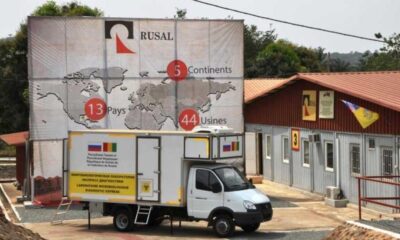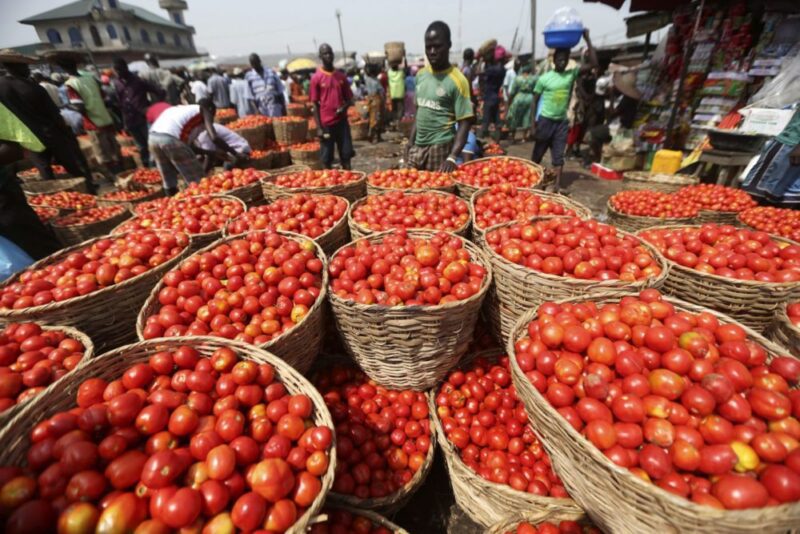Economic Issues
The Economics of Buhari And Season of Good News -By Niyi Akinsiju

Nigeria is certainly evolving a fiscal and monetary policy template that daringly side-steps the conventional approach to managing national economies as orchestrated by different arms of the Brettonwoods Institutions like the International Monetary Fund (IMF) and the World Bank.
Things are changing; since May 29 when President Muhammadu Buhari was sworn into office, Nigeria decidedly opted for originality as it adamantly developed and deployed policies that directly attend to peculiar domestic economic challenges.
Within a six-month period before May 29, 2015, erstwhile President Goodluck Jonathan, was compelled, in consequence of rapidly dwindling national revenue resulting from the persistently falling price of crude oil, the nation’s mainstay income earner, to devalue the national currency, the Naira, by an aggregate 20 percent. Of course, for the IMF and its acolytes, devaluation is the standard medication for troubled currencies. That Naira devaluation drew commendations from the advocates of the conventional approach to managing the economy of an under-developed African country.
Enter Buhari; one of the first major fiscal policies implemented by the Buhari government was the restriction of access to Nigeria’s official foreign exchange window of 41 items. The thrust of that policy was to staunch the unbridled haemorrhage of the nation’s strategic foreign reserve. The hoopla that followed was expected – the IMF and its lackeys were outraged.
The IMF was so incensed that its Managing Director, Christine Largarde, publicly admonished Nigeria on the policy of restricting access to official foreign exchange window as a means to protecting and promoting local alternatives and preserving the nation’s foreign exchange reserve. Coming on the back of this were calls by well heeled economic commentators, also insisting on the devaluation of the Naira. But the President held on to his position. He clearly declared he will not devalue the Naira.
Meanwhile, that policy deployment and its consequences are reverberating across the world. From the United States of America (USA), to the Netherlands, to Malaysia to the United Kingdom, even to South Africa, Nigeria’s refusal to allow the 41 items access to the official foreign exchange window have caused a sort of dislocation to the economies of those countries.
…475,180 jobs were created in Q3 2015 divided between 41,670 jobs in the formal sector and 428,690 in the informal and public sectors respectively.
At the last count, at least, nine World Trade Organisation (WTO) member countries had formally reported Nigeria to the WTO over concerns about the trade-related impact of the Central Bank of Nigeria’s rule restricting access to hard currency from the interbank market to buy 41 items which include rice, cement, private jets, steel products, plastic and rubber, soap, cosmetic, furniture and Indian incense.
The USA and Europe officials at the WTO meeting said Nigeria did not seek approval from the International Monetary Fund (IMF) for its foreign exchange curb. They confessed the curb was having a significant impact on trade. And in truth, events since that policy implementation has turned the once-upon-a-time buoyant Liverpool Market in the United Kingdom into a ghost market, as Nigerians that formed the bulk of the market traffic have shunned the market; reports indicate that shop owners are closing down.
In the Netherlands, from where Nigerian traders imported dried fish popularly called oporoko or kpanla locally, there are reports of business concerns involved in the production of dried fish folding up due to non-patronage, and in Malaysia, reports say rice warehouses are closing down due to drastically reduced patronage.
For Nigeria, all these aggregate to accretion to its foreign reserve. From a $29billion position at the end of May, 2015, Nigeria’s foreign exchange reserves now stand at a healthy $30.3billion. Good news.
Currently, Nigeria’s economic indicators are turning green, some real good news in a long while: The Gross Domestic Product, (the total value of goods and services produced in the country) picked up gently from 2.4 percent year-on-year to 2.84 percent in Q3, 2015. In the same period, Consumer Price Index (A measure of changes in the purchasing-power of a currency and the rate of inflation) eased for the first time in 11 months to 9.3 percent, month on month.
Besides, 475,180 jobs were created in Q3 2015 divided between 41,670 jobs in the formal sector and 428,690 in the informal and public sectors respectively.
Then came the Treasury Single Account (TSA), facilitating a profound change in the national fiscal and monetary landscape. This government’s iron cast commitment to the implementation of the TSA and the deft management of the after effects clearly underscore a focused approach to applying the unconventional to resolving national economic challenges.
…through the adroit use of monetary policy, the Cash Reserve Ratio (CRR), the CBN allowed system liquidity to climb to a 2-year summit of over N1trillion post TSA implementation in October; this is in addition to the more than N700billion CRR unfrozen credit. The apex bank allowed another N850billion in paper maturity over October and November, without any single mop-up through its usual Open Market Operations (OMO).
With the TSA, the CBN effectively migrated all possible Federal Government funds from Deposit Money Banks (Commercial banks) to the CBN thereby enabling an effective channel for regulating the banks to achieve predetermined fiscal and monetary policy objectives. It also removed the distortion in Federal Government borrowing its own money from banks through sale of treasury bills and bonds to the banks.
Invariably, through the adroit use of monetary policy, the Cash Reserve Ratio (CRR), the CBN allowed system liquidity to climb to a 2-year summit of over N1trillion post TSA implementation in October; this is in addition to the more than N700billion CRR unfrozen credit. The apex bank allowed another N850billion in paper maturity over October and November, without any single mop-up through its usual Open Market Operations (OMO).
The decision to allow this level of liquidity marked the first real signal of a shift in monetary policy to an accommodative stance compared to the hawkishness of the past four years. As expected, the glut so created drives sharp reduction to yields from bonds and Treasury bills to a near five-year low.
Consequently, short term and long term rates have collapsed 850 basis points and 450 basis points from October to 5.2 percent and 10.5 percent respectively. As it were, the aggregate effect of this helped facilitate, for effect, the CBN call for lower interest rate.
It is at this juncture that we should commend the Federal Government and the CBN for their impressive capabilities.
To lift the country out of the near state of recession it inherited from its predecessor, and, of course, to put increased tempo to the urgent necessity to diversify the nation’s economic base, especially in the face of despondently dwindling revenue as a result of continued crude oil price decline, the Federal Government knew for certain that it would have to opt for heavy domestic borrowing to fund the 2016 expenditure. But the Government determined it would have to be on its terms; through a lower rate!
At the November bond auction, the Debt Management Office took advantage of the low rate environment to sell 40 percent more paper than planned at marginal rate 10.25 percent on average, the lowest since February 2011.
Without doubt, the CBN, through the Monetary Policy Committee, has calibrated a new economic architecture as it moves to stimulate the economy by reducing monetary policy rate from 13 percent to 11 percent and the CRR from 25 percent to 20 percent. This is, even, as it replaces the new rate symmetric corridor with an asymmetric corridor of 200 bps and 700bps.
It’s obvious the Federal Government is living up to its commitment of turning around the national economy. For many Nigerians, optimism should prevail because this government is clearly insistence on doing the unusual to lift the poor out of poverty.
The implication of this on liquidity (a measure of the extent to which a person or organisation has cash to meet immediate and short term obligations) is that the reduction in the CRR on private sector deposits will further relieve banks from liquidity squeeze and increase the need for banks to match additional liabilities with assets. The introduction of the asymmetric corridor will reduce the incentive for banks to place money with CBN at its standing deposit facility as it will now attract only four percent interest rate per annum.
A corollary to the positives expected from the impact of the policy on the financial industry is that banks will need to increase their lending to the real sector as M2 (M2 is broader money classification than M1 because it includes assets that are highly liquid but not cash) will rise by 40 percent with limited fixed income instrument available. Banks will look to create risk assets from genuine economic agents with low gestation periods. The special incentive to the banks by the CBN is that only banks willing to lend money to businesses in the real sector – manufacturing, agriculture, solid mineral and infrastructure will benefit from the freed credit realised from the reduction of the CRR from 25 percent to 20 percent.
For the Federal Government, this move will pave way for government borrowing needs in 2016 to drive its spending plan and repay its existing debt. The CBN, on the other hand, will be reducing Federal Government debt service burden by about a half. Federal Government debt service burden in 2014 was in excess of 1trillion.
It should be noted that the decrease in interest rate goes against the trend in most African countries whose Monetary Policy Committee have been raising interest rate. South Africa by 25bps at its last MPC to 6.25 percent, Ghana also increased rate from 25 percent to 26 percent this year.
Already, the rate cut is impacting the capital market. On Wednesday November 26, a day after the rate cut, the stock market experienced rebounds with the All Share Index rising by 0.5 percent to settle at 27,743.92 after reaching the lowest point since February 2015. Investors gained a total of N52.3bn as market capitalisation increased to N9.5tn on that day alone.
It’s obvious the Federal Government is living up to its commitment of turning around the national economy. For many Nigerians, optimism should prevail because this government is clearly insistence on doing the unusual to lift the poor out of poverty.
Niyi Akinsiju, a public affairs analyst, writes from Lagos.



















